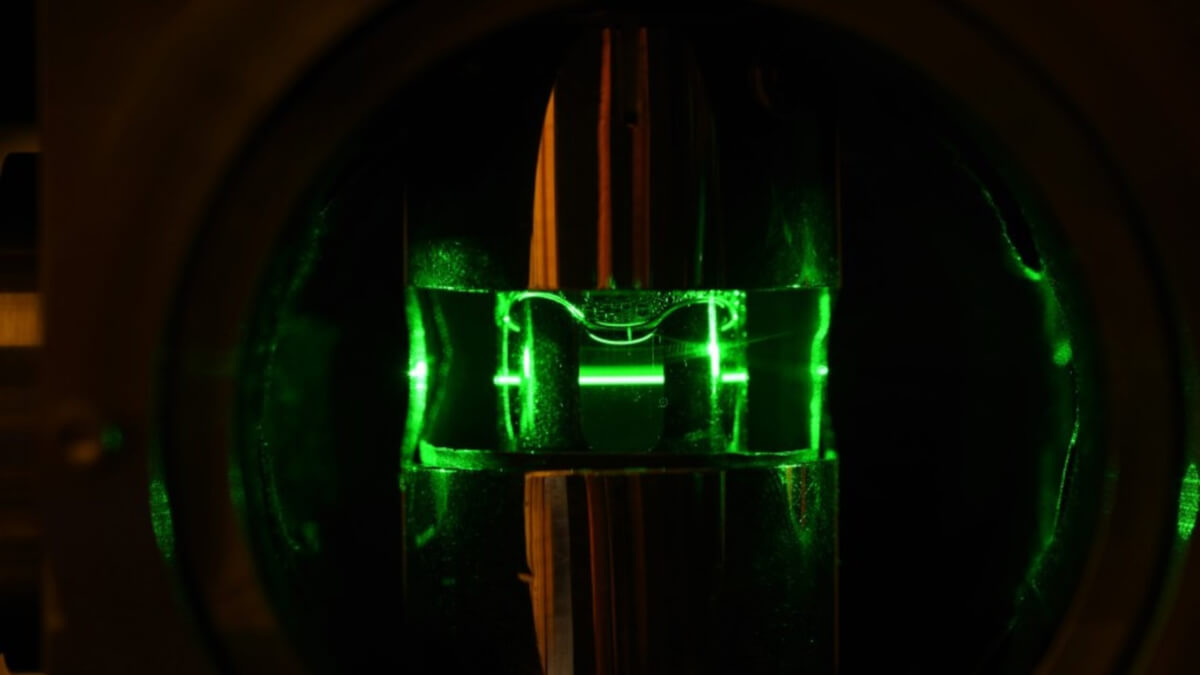DARMSTADT, Germany — Where these German scientists are going, they don’t need roads. In a revolutionary breakthrough at the Technical University of Darmstadt, physicists have discovered that time is reversible within glass and plastics — all without using a flux capacitor!
In our daily lives, time seems to move in one direction – for instance, a broken cup doesn’t spontaneously reassemble. This concept aligns with the second law of thermodynamics in physics, which states that disorder in a system tends to increase over time. However, a team led by Till Böhmer at the Institute for Condensed Matter Physics has found that this irreversible flow of time doesn’t apply uniformly, particularly when looking at the molecular movements in materials such as glass or plastic.
“It was a huge experimental challenge,” says Böhmer in a university release.
Materials like glasses or plastics are composed of tangled molecules in constant motion, always slipping into new positions in search of a more energetically favorable state. This process, which changes the material’s properties over time, is what we refer to as aging. However, unlike the shattering of glass, physicists discovered that these molecular movements can be reversible, given a specific viewpoint.
The concept of “material time” has been pivotal in understanding this phenomenon. Imagine material time as an internal clock within the material, ticking at a different pace than our standard time, based on how quickly the molecules reorganize. Until now, measuring this material time has been a significant challenge, eluding scientists for over fifty years. However, the Darmstadt team has achieved this using ultra-sensitive video cameras to capture minuscule molecular fluctuations.
“You can’t just watch the molecules jiggle around,” notes Thomas Blochowicz, a professor at the Institute for Condensed Matter Physics at the Technical University of Darmstadt.

The researchers’ approach involved directing a laser at a glass sample. The scattered light from the molecules created a chaotic pattern of light and dark spots on the camera’s sensor. Using statistical methods, they calculated the variation in these fluctuations over time, effectively measuring the pace at which the material’s internal clock ticks. The precision required for these measurements was only possible with cutting-edge video technology.
Their statistical analysis, aided by researchers from Roskilde University in Denmark, led to the surprising finding: within the scope of material time, the fluctuations of the molecules are time-reversible. This means that, like the pendulum in a video played forwards or backwards, the movements do not change if the material time is allowed to tick in reverse.
“However, this does not mean that the aging of materials can be reversed,” emphasizes Böhmer.
Instead, it confirms that the concept of material time accurately represents the irreversible aspect of material aging. Anything else moving in the material relative to this time scale does not contribute to aging. This discovery is considered generally applicable to disordered materials, as it was observed in both glass and plastic and supported by computer simulations of a model material.
Despite this significant advancement, researchers acknowledge that many questions remain. They plan to explore the extent to which this observed reversibility is tied to the fundamental laws of physics and how the internal clock’s ticking varies across different materials. This ongoing research could pave the way for more groundbreaking insights into the nature of time and material aging.
The study is published in the journal Nature Physics.
You might also be interested in:
- Scientists Discover This Singing Mouse’s Brain Can Bend Time
- Can we time travel? Scientists use quantum physics to show how it’s possible
- Is time travel really possible? An astrophysicist explains the science behind science fiction
- New ‘ultra-precise’ atomic clock may unlock realms of physics not yet explored

Fake story. Time doesn’t flow backwards in materials.
Sorry folks, you won’t be able to travel back in time as a tourist.
time is nothing more than a humanoid construct to make our lives more sensible…to think that everything in the universe conforms to that construct….is not a given…
I’m not sure I understand this completely, but as I understand the fundamental laws of nature they ARE time-reversible (except entanglement of three or more quantum states and maybe something about neutrinos). The irreversibility ‘in our daily lives’ occurs in ensembles that are not in statistical equilibrium. Life works by exploiting a flow of ‘high quality’ energy or matter to extract order, in effect of even higher quality, at the cost of an overall increase in entropy in the wider environment. While ingenious, there is nothing magical or ‘illegal’ about it.
A plastic or glass is clearly an ensemble: one molecule is neither plastic nor glass. I don’t know whether the laser is injecting significant energy, but whatever the case, if molecules arrange themselves into greater order with release of energy there must be an increase of disorder somewhere. Is it possible that if no change in total energy is involved the entropy in the whole system does not change, so the configuration can wander freely between what we interpret as order and disorder?
Great comment.
When water vapour “apparently” orders itself into Snowflakes is entropy increased? What about Salt crystals forming from solution?
It appears to me in these cases, that the Universe is becoming more ordered rather than more random.